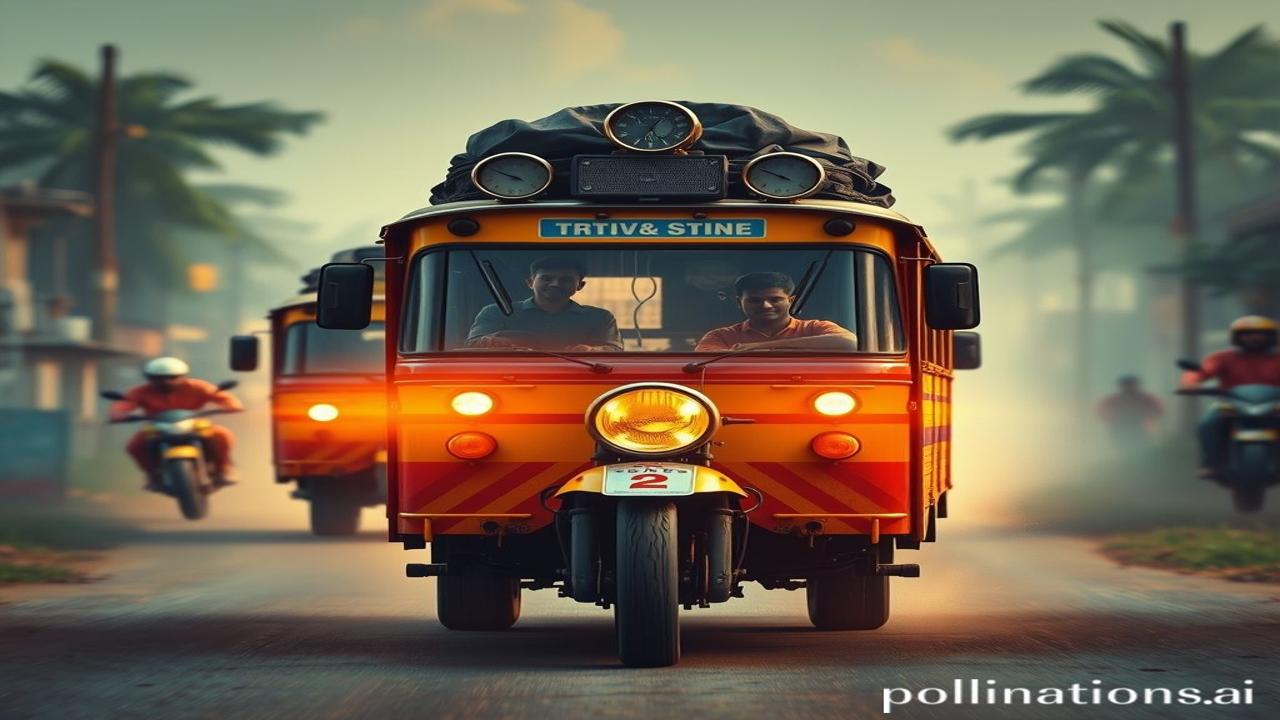Gaon Ki Sadakon Pe: Reimagining Rural Transportation in India
Kabhi kabhi, mujhe lagta hai jaise main kisi purani painting mein daakhil ho rahi hoon. Dhool se bhari sadkein, bail-gaadiyon ki ghantiyaan, aur logon ki aawazein… yeh sab milkar ek aisi duniya banate hain jo dil mein utar jaati hai. Aaj hum usi duniya ke bare mein baat karenge – rural transportation, yaani gaon ki sadakon par safar ke naye tareeke.
Kya Hai Yeh Rural Transportation Revolution?
Rural transportation sirf gaon ko sheher se jodna nahi hai. Yeh gaon ki economy ko badhana, logo ko access dena, aur ek better quality of life banana hai. Imagine kijiye, ek kisan jo apni fasal ko aasani se mandi tak pahuncha sakta hai, ya ek ladki jo bina kisi dar ke school jaa sakti hai. This is what we are talking about.
When & Where? Although rural transportation in India has been evolving for centuries, in the last decade, with government initiatives and technological advancements, we have seen revolutionary changes. Roads are being built in the most remote areas, and new transportation models are being tested and implemented across the country.
Importance? Rural transportation is not just about getting from point A to point B. It’s about connecting communities, empowering individuals, and fostering economic growth. It’s about ensuring that everyone has the opportunity to thrive, regardless of where they live. Yeh ek tarah se “शक्ति” (Shakti) hai, jo gaon ko aage badhne mein madad karti hai.
Zameeni Sach: Log Aur Jeevan
Picture this: Gaon ki Radha, jo apne hath se bani hui mitti ke bartan lekar bazaar jaati hai. Pehle usey 10 kilometer paidal chalna padta tha, uske baad bus pakadni padti thi. Lekin ab, e-rickshaw ke aane se, uska safar asaan ho gaya hai. Woh apne bartan bech kar zyada paise kamaati hai, aur uske bachche ab school jaa sakte hain.
“Are Radha, aaj toh tu jaldi pahunch gayi!” Bazaar mein ek dukandaar ne kaha.
Radha muskuraai, “Haan bhaiyya, yeh naya e-rickshaw toh kamaal hai. Zindagi badal gayi meri toh!”
This small conversation shows the impact of rural transportation innovations on the lives of ordinary people.
Dharohar Aur Pehchan: A Connection to Bharatiyata
Even today, you’ll find remnants of traditional transportation methods in many rural areas. Think of the bullock carts still used for farming or the horse-drawn carriages that carry people to temples during festivals. These are not just relics of the past; they’re integral parts of our cultural “धरोहर” (Dharohar). These traditions echo in the modern identity of Bharatiyata.
The integration of modern transportation with traditional methods is a key aspect of preserving our cultural heritage. We need to find a balance between progress and preservation, ensuring that our unique identity is not lost in the process.
Mazedaar Tathya Ya Bhram-Bhanjak
Myth: Gaon mein roads banane se sirf sheher ke logon ko fayda hota hai.
Fact: Roads banne se gaon ke logon ko sabse zyada fayda hota hai. They get better access to markets, healthcare, and education. It creates employment opportunities and boosts the local economy.
Drishya Aur Bhavnaayein
Imagine the smell of freshly turned earth after the monsoon rains, the sound of children laughing as they ride bicycles to school, the feel of the warm sun on your skin as you travel through the countryside. These are the sensory experiences that define rural India.
The air is thick with the aroma of chai and woodsmoke. The temple bells chime in the distance, creating a serene and peaceful atmosphere. Even the dust that settles on your clothes seems to tell a story.
Antim Vichar Ya Uddharan
Rural transportation is more than just roads and vehicles. It’s about creating a more inclusive and equitable society. It’s about empowering individuals and transforming communities.
As the great poet Rabindranath Tagore once said, “ग्राम तो धन से शून्य है, किन्तु स्नेह से परिपूर्ण।” (The village may be devoid of wealth, but it is full of affection.) Let’s make sure that our villages are also full of opportunity and connectivity.
